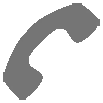Today’s contemporary CPAP devices are incredibly capable and sophisticated machines that can deliver a wide range of specific CPAP results in the form of data each morning. It is important to monitor and understand the data that your CPAP machine records every night. While devices vary by complexity, function and price, the best CPAP machines include several important statistics about your nightly sleep patterns. Let’s look at the unique metrics you should track while undergoing CPAP therapy.

Your Sleep Duration CPAP Results
The first piece of information that all CPAP devices manage is the duration of CPAP usage over the course of a night, week, month, or year. The readout verifies that you’re using the CPAP as intended. This is why it is important to keep a close eye on your CPAP readings.
AHI Severity Index
The Apnea-Hypopnea Index (AHI) demonstrates the user’s level of Obstructive Sleep Apnea (OSA) by creating a “number of OSA episodes per-hour” figure. In general, 0-5 events per hour is normal, 5-15 is mild OSA, 15-30 indicates moderate OSA, and anything above 30 equates to severe Sleep Apnea. If you see a steady rise in OSA events as indicated by the AHI figure, consult with your sleep specialist right away.
Leak Rate
CPAP devices will leak, but it is intentional. As the user breathes, they exhale carbon dioxide and must be exhausted to prevent a dangerous respiratory situation. Each CPAP therapy mask features a set of specially-designed holes that vent (leak) carbon dioxide as the user exhales. Most machines will show a “normal” leak rate if the amount registers 20-24L/minute or less. Anything above that, and you’re likely dealing with a poor-fitting mask. We wrote a complete guide to CPAP leak rates you can check out to learn more.
Pressure Statistics
Your CPAP results will show the percentage of time the Auto Adjust feature worked to bring your pressure levels up to the maximum setting. If your CPAP adjusts the positive airway up to the maximum level of pressure, more than 10% of your sleeping hours, you might want to increase the ceiling pressure of the device. You can consult with your sleep specialist to re-calibrate the CPAP, if necessary.
Other Indices
Beyond pressure statistics, average hours of use, AHI indices, your CPAP machine can also deliver information such as:
- Number of spontaneous arousals per hour. This means any non-respiratory events detected during the night that may indicate other health issues.
- RDI, or Respiratory Disturbance Index. The RDI includes respiratory issues like snoring, hyperventilation, desaturation, and more.
- PLM figures, or periodic limb movements. Periodic Limb Movements are repetitive limb movements that can disrupt sleep. Your CPAP machine can analyze this movement to identify other concerns, including chronic PLM.
Your CPAP device is designed to keep watch on your sleep throughout the night. This data can help you and your doctor make informed decisions about your respiratory health and treatment regimen. For more information about CPAP devices, including those that offer the latest in diagnostic reporting capability, contact the experts at CPAP.com today!




28 Responses
I don”t understand the numbers 0.7 is how many times in a hour period and 1.0 in a 4 hour period i dont understand what that means could you please help me on the numbers to better understand been waking up with headaches ever since i started using machine
Thank you
Jpann
AHI is expressed in terms of numbers and decimals and is a composite score of a couple of different factors. These can include the number of times you stop breathing during the night, and the number of times blood oxygen drops to an unsafe level. It’s hard to say what your AHI score is made up of unless your machine keeps track of the individual events. Just know that a 1.0 or a 0.7 AHI is very good if that’s what you’re referring to. It means your therapy is working well.
i have an older Phillips Respironics. the AHI reads 2.8 and 2.7 on 30 day average. We are in CO. so drier here than where I usually live. What ramp range and ramp time is usually good? Any other readings to be sure of?
Hi Barbara, the ramp is a comfort setting therefore, you can manipulate this setting to your comfort. The AHI, readings are considered to be normal as long as it is listed at under 5, great job!
Since Colorado has a drier climate, you may need to add humidification, or increase your humidity settings, if you are currently using a humidifier.
For further questions, or concerns, please feel free to reach us at: 1-800-356-5221.
Have a great day!
i was reading 4 AND 5 ON MY CPAP events per hour.
On vacation now my readings have increased to 10 and 12.5.
Could it be the different air flow in the room?
I live in Chicago, IL
Now in Florida
Hi Lillian, I don’t know that the change in your readings would be related to a different air flow in the room. Are you currently using a standard CPAP machine? Did you have any alcoholic drinks that you normally don’t have? If so this could have an effect on your readings. There may be other causes for the change in your readings as well.
I would encourage you to speak with your doctor about the difference in your readings to see if he/she may have any input.
If you would like to speak with us further, please feel free to reach us at: 1-800-356-5221, or you may e-mail us at: cpap@cpap.com.
We wish you the best!
My son is two and his total hours used is 7685 and used hours are 3021 is that good ?
Hi Rachel, my apologies for the delayed response. The total hours used is how much usage is on the machine, kinda like how many hours the machine is actually turned on. The used hours would be how many hours you are actually receiving therapy with the mask on.
Unfortunately, i’m not able to confirm if the hours your son has is good, or not. This is something that you would need to speak your son’s doctor about for data interpretation. As the used hours could be good, or bad depending on the usage threshold, which is the minimum time that he must use his device in order to be compliant.
For further questions, or concerns, please feel free to reach us at: 1-800-356-5221, or you may e-mail us at: cpap@cpap.com.
Enjoy your day!
My reading was 1.7 of AHI. Does it a good result? I’d like to know that CPAP machine needs to be adjusted or not?
Hi Bonnie, when your AHI, is below 5, it is considered normal. It sounds like your settings are working well for you.
Please feel free to contact us at: 1-800-356-5221, or e-mail us at: cpap@cpap.com with further questions, or concerns.
We wish you continued success!
Hi, I am on an APAP and I’ve been faithfully using it for over a month but my average AHI is 7+ and sometimes is as high as 10+. My sleep Dr wants another sleep study but insurance won’t cover it. I stopped using it for a few weeks but just started up again because there’s got to be a way to get it to work for me. Not using it caused the compliance person to call and when I explained my numbers aren’t good and I’m still super tired, she said the numbers aren’t bad, only a little over 5, and had no suggestions. Do you have any for me?
Hi TiredInMass,
It sounds like your having a tough time with your CPAP therapy and i’m very sorry about that. In order to get to the root of the problem, why did you initially stop using your CPAP machine? Keep in mind, while AHI, is important, there is other data that affects this number for example, leaking, can affect your AHI.
In order for us to provide you with solid suggestions, please determine why you stopped using your CPAP therapy to begin with and once you’ve isolated that issue and made an adjustment to alleviate it, then you can plan your next step.
Please feel free to reach us at: 1-800-356-5221, or you may e-mail us at: cpap@cpap.com, with further questions, or concerns.
We wish you the best!
What does it mean when you have a sudden change in episodes from average of 0.5 – 2.4 to high above 15. How do I diagnose the cause of it is the machine or not?
Hey James, there are many reasons that your AHI could increase. Have you checked your data, to see your leak rate? If you have a high leak rate, this could increase your AHI. Please be sure that you have changed your cushion within the last 3 months and your entire mask within the last 6 months.
Also, if you’ve had a significant weight gain, or weight loss, this could cause a difference in AHI. Keep in mind that if you are taking certain medications, or consuming alcohol, you may see an increase in your AHI as well.
I would recommend you speaking with your doctor, so that he/she, can view your therapy data in detail to confirm if a setting change is warranted.
For further questions, or concerns, please feel free to reach us at: 1-800-356-5221, or you may e-mail us at: cpap@cpap.com.
We wish you the best!
If my numbers are below 5, which means normal, does that mean I don’t need the machine? Because I don’t have sleep apnea?
Hi Christine, if your numbers are below 5 while your using the CPAP machine, it means your CPAP therapy is working for you and you should continue with your therapy.
For further questions, or concerns, please feel free to reach us at: 1-800-356-5221, or you may e-mail us at: cpap@cpap.com.
Have a wonderful day!
My readings are often 0.0. Is this normal?
Hi Susan, it is definitely, possible to receive a 0.0 reading, which would mean your CPAP therapy is working perfectly, as long as there is no malfunction with your machine.
In order for me to gain a better understanding of your therapy data, please provide the name of the machine you’re using and where you are seeing the 0.0? For example, on your home display screen, for your AHI, are you viewing your complete therapy data report?
Please feel free to reach us at: 1-800-356-5221, or you may e-mail us at: cpap@cpap.com.
I hope to hear from you soon!
What is the difference between Events per hour (8.9 ) and AHI 3.8. What should it be.
Hi Chris,
My apologies for the delayed response. Events per hour is how many times you stop breathing, or your breathing becomes shallow in an hour. The AHI, is the average number of combined apneas and hypopneas you have per hour.
AHI under 5 per hour is considered normal.
For further questions, or concerns, please feel free to reach us at: 1-800-356-5221, or you may e-mail us at: cpap@cpap.com.
Have a great day!
I can’t seem to get a good seal on the dream works full mask. On my read out it all ways shows 0 on mask leak. How can I fix or change this?
Hi James,
If you’re receiving 0 on mask leak, that’s great! It means your mask isn’t detecting any leaks and you have a good mask fit. If you still feel there is an issue with your mask seal, please provide us the name of your machine, or even call us with the machine near you.
For further questions, or concerns, please feel free to reach us at: 1-800-356-5221, or you may e-mail us at: cpap@cpap.com.
Best Wishes
I started using a Resmed CPAP three months ago. I had a terrible time getting use to it but now I’m fine with it. My events per night range from 0.3 to 1.0. Does this mean I’m having less than 1 event at 0.3 per hour and when I have 1 event, does that mean 1 event per hour. The numbers were never explained to me. My machine also registers 1 on the face mask leak.
Hi Lorraine,
I’m so glad to hear that you’ve become acclimated with your CPAP therapy. Yes, the 0.3, means you’re having less than 1 event per hour. The 1 event, means you’re having on average 1 event per hour.
Having an AHI average under 5 is considered normal, Great job!
For further questions, or concerns, please feel free to reach us at: 1-800-356-5221, or you may e-mail us at: cpap@cpap.com.
Have a great day!
I am trying to avoid a doctor’s visit to have the data on my SC card read from my Respironics Dream Station. Can the SD card be removed by the owner? Who, besides a doctor, can read the SC card and produce a CPAP Compliance report? Can a written report be sent, by the organization reading the SD card, to the insurance company? Is there a standard number of times a year that an insurance company wants to see reporting in order to continue to cover the cost of a CPAP? I realize it differs by insurance company, but often, there are industry standards.. Thank you!
Hi Carol,
The user can remove the SD card from the machine. Depending on the machine you’re currently using, you may have access to your own therapy data and report.
What is the name of your machine?
CPAP.com is a cash based company, we don’t work with, or accept any insurance therefore, I’m not certain as to what the reporting requirements are.
In order for you to receive accurate responses regarding insurance reporting requirements, you should speak directly with your insurance company.
For further questions, or concerns, please feel free to reach us at: 1-800-356-5221, or you may e-mail us at: cpap@cpap.com.
Have a great day!
hi, our cpap machine is RESmart. what does compl , mean p and sn1 means in the interpretations? thank you.
So my machine Resmed myair will calculate my new apnea number and put it on my machine at this time I am showing a 1.0 and I started using April 17 2017 I know it shows leaks and events each night but I didn’t know it knew my new apnea number